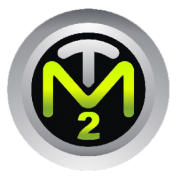
Below is a comprehensive ranking of all unique electronic components and parts from MaRCTech2 line card. The ranking is ordered from most purchased to least purchased in 2025. This ranking is based on current global demand trends, industry forecasts, and recent market analysis.
Ranked List of Components and Parts
Rank Component/Part Name
1 Integrated Circuits (ICs)
2 IC substrates
3 DC DC Converters
4 POL Switching Regulators
5 AC/DC Power Supplies
6 Power Supplies
7 Power Supplies - Board Mount
8 LED Drivers
9 PCBs
10 PCBA
11 Printed Electronics
12 Flexible Circuits
13 Rigid-Flex
14 Insulated Metal Substrate Boards (IMS)
15 Membrane Switches
16 Flexible Heaters
17 Flex Cables
18 Sensors, Transducers
19 Optoelectronics
20 LEDs
21 Isolators
22 Phased array technology
23 Connectors
24 Connectors and Cable Assemblies
25 Connectors, Interconnects
26 Cable harnesses
27 Cables, Wires - Management
28 Power Cords
29 Plugs
30 Adapters
31 Locking connectors
32 Non-halogen connectors
33 Power Control Boxes
34 Box builds
35 Electrolytic Capacitors
36 Super Capacitors
37 Polymer Capacitors
38 Film Capacitors
39 Inductors, Coils, Chokes
40 Filters
41 Magnetics
42 Transformers
43 Switches
44 Relays
45 DC Contactors
46 Capacitive Switches
47 Keypads
48 Custom Plastics and Metal
49 Custom Rubber Parts
50 Custom Urethane Parts
51 Custom Plastic/Injection Molding
52 Precision Sheet Metal Fabrication
53 Mechanical Assembly
54 Custom Components
56 Industrial Automation and Controls
57 Tools
58 RF and Wireless
59 Circuit Protection
60 External/Internal (Off-Board)
61 Conduction and Convection
62 Cooled - Fanless
63 RF and Microwave
Key Insights
- Semiconductors (especially ICs and substrates), power management devices (DC/DC converters, regulators, power supplies), and PCBs are the most purchased categories, driven by demand in automotive, industrial automation, and consumer electronics.
- Sensors, optoelectronics, and LEDs are also in high demand, reflecting trends in IoT, smart devices, and lighting.
- Connectors, cables, and harnesses remain essential due to their ubiquity in all assemblies.
- Passive components (capacitors, inductors, magnetics) and relays/switches are purchased in large quantities but are typically less in demand than active components and power management ICs.
- Mechanical, custom, and specialized assemblies are generally purchased in lower volumes compared to standard electronic components.
This ranking reflects the latest available data and industry consensus for 2025, providing a comprehensive overview for sourcing and inventory planning.
Most Difficult Electronic Components to Source in 2025
Sourcing electronic components remains a significant challenge in 2025 due to ongoing supply chain disruptions, geopolitical tensions, and surging demand across industries. Below is an analysis of which components from your comprehensive list are currently the most difficult to source, based on recent industry reports and market insights.
Semiconductors and Integrated Circuits (ICs)
- Integrated Circuits (ICs)
- Microcontrollers (MCUs)
- IC Substrates
- Power Management ICs
- Specialized Chips (e.g., GPUs, AI chips)
These components continue to face the most severe shortages, with lead times for some ICs and microcontrollers stretching from several months up to a year. The situation is especially acute for legacy parts, cutting-edge chips for AI, and automotive-grade semiconductors. Supply constraints are driven by high demand, limited fab capacity, and geopolitical disruptions affecting raw materials and production facilities.
Passive Components
- Electrolytic, Super, Polymer, and Film Capacitors
- Inductors, Coils, Chokes
- Resistors (including thick-film types with rare metals)
Passive components, particularly capacitors and inductors, are vulnerable to shortages due to their reliance on specialty materials like tantalum, ruthenium, and palladium. Disruptions in mining or geopolitical instability in supplier regions (e.g., Africa for tantalum, Russia/Ukraine for palladium and neon gas) can quickly tighten global supply. The industry is highly concentrated in East Asia, making it susceptible to regional disruptions.
Connectors and Cable Assemblies
- Connectors (including locking, non-halogen, high-speed, and custom types)
- Cable Harnesses
- Connectors and Cable Assemblies
Connectors are increasingly difficult to source due to rising raw material costs (copper, gold, silver, plastics), manufacturing complexity, and the need for high-reliability products in automotive, aerospace, and industrial applications. Fluctuating commodity prices and regional manufacturing constraints contribute to longer lead times and higher costs.
Power Supplies and Related Products
- DC/DC Converters
- AC/DC Power Supplies
- Board-Mount Power Supplies
- LED Drivers
While the overall market for power modules is relatively stable, certain models, especially those with specialized features or certifications, are experiencing lengthening lead times. The complexity of manufacturing and the need for specific materials can create bottlenecks, particularly for high-performance or medical-grade supplies.
RF, Microwave, and Specialized Components
- RF and Microwave Components
- Phased Array Technology
- Optoelectronics
Specialized RF and microwave components are harder to source due to their reliance on niche manufacturing processes and materials, as well as limited global suppliers. Demand from telecom, defense, and emerging 5G/AI markets exacerbates these shortages.
Battery Products and Circuit Protection
- Premium Battery Solutions
- Battery Packs and Assemblies
- Circuit Protection Devices
Battery components and circuit protection devices can be difficult to procure when supply chains for raw materials (e.g., lithium, nickel, rare earths) are disrupted or when regulatory changes impact sourcing and shipping.
Key Factors Driving Sourcing Difficulty
- Geopolitical Risks: Conflicts and trade barriers (e.g., in Russia, Ukraine, China, Israel) disrupt raw material and component supply.
- Material Shortages: Scarcity of specialty metals and chemicals affects both active and passive components.
- Manufacturing Concentration: Heavy reliance on East Asian manufacturing creates vulnerability to regional disruptions.
- Obsolescence and Legacy Parts: Older components may become unavailable as manufacturers shift to newer technologies.
- Tariffs and Compliance: Changing trade policies and stricter export controls increase costs and complexity.
Summary Table: Most Difficult to Source Categories
|
Category |
Examples |
Sourcing Difficulty |
|
Semiconductors & ICs |
ICs, MCUs, IC substrates, power management ICs |
Very High |
|
Passive Components |
Capacitors, inductors, resistors |
High |
|
Connectors & Cable Assemblies |
Connectors, cable harnesses, assemblies |
High |
|
Power Supplies |
DC/DC, AC/DC, board-mount, LED drivers |
Moderate-High |
|
RF & Microwave |
RF, phased array, optoelectronics |
High |
|
Battery & Circuit Protection |
Battery packs, circuit protection |
Moderate |
The most difficult components to source in 2025 are semiconductors (especially ICs and microcontrollers), certain passive components (capacitors, inductors), connectors, and specialized power and RF modules. These challenges are driven by a combination of high demand, material shortages, geopolitical instability, and manufacturing concentration in specific global regions.
Why a Manufacturer’s Representative Is Essential for Difficult-to-Source Components
As you can see, in today’s electronics market sourcing critical components, such as integrated circuits, IC substrates, specialized power supplies, connectors, and passive components, has become increasingly challenging due to persistent shortages, geopolitical risks, and complex global supply chains.
Engaging a manufacturer’s representative (rep) offers strategic advantages that can directly address these sourcing difficulties.
Key Reasons to Use a Manufacturer’s Representative
Access to Deep Industry Networks and Relationships
- A well-connected manufacturer’s rep maintains long-standing relationships with multiple manufacturers, distributors, and supply chain partners. This network provides buyers with access to allocation, early product releases, and alternative sourcing options that are often unavailable through standard channels.
- In times of shortage, the right rep can leverage these connections to prioritize your orders or identify available inventory across their network.
Expert Product and Market Knowledge
- Experienced reps are highly knowledgeable about the technical specifications, lead times, and sourcing challenges for each product line they represent.
- They can recommend alternative components, suggest design changes, or identify cross-compatible parts when your preferred items are on allocation or backorder.
Streamlined Communication and Problem Resolution
- Rather than navigating multiple suppliers or overseas contacts, an outstanding manufacturer’s rep serves as your single point of contact, reducing delays and miscommunication.
- They can escalate urgent requirements directly to manufacturer decision-makers, speeding up responses to critical shortages or quality issues.
Customized Solutions and Value-Added Services
- For components that are hard to source or require customization (e.g., custom cable assemblies, unique PCBs, or specialized power supplies), a trusted rep coordinate directly with engineering and production teams to develop tailored solutions.
- They can also arrange for technical support, training, and post-sale service, ensuring your project stays on track even when supply issues arise.
Local Market Expertise and Risk Mitigation
- Your best manufacturer’s rep understands regional regulations, import/export constraints, and local market dynamics, helping you navigate compliance and avoid delays.
- Their presence in your geographic area means they can provide rapid support and on-the-ground troubleshooting if supply chain disruptions occur.
Cost-Effective and Predictable Procurement
- Your manufacturer’s rep is compensated via commission only after successful transactions, reducing your overhead compared to maintaining in-house sourcing teams.
- They often handle multiple complementary product lines, allowing you to consolidate purchases and streamline your procurement process.
Real-World Impact
“In the automotive industry, MaRCTech2’s manufacturers’ representatives play a critical role in sourcing specialized components from global suppliers. Their expertise in navigating complex supply chains and ensuring adherence to stringent quality standards enables manufacturers to maintain production schedules and meet customer demand effectively.”
How a Manufacturer’s Rep Addresses Sourcing Challenges
|
Sourcing Challenge |
How a Manufacturer’s Rep Helps |
|
Long lead times, allocation |
Leverages network for priority access and alternatives |
|
Technical complexity |
Provides expert advice and cross-references |
|
Communication delays |
Acts as single point of contact, speeds escalation |
|
Custom or hard-to-find parts |
Coordinate custom solutions with manufacturers |
|
Regulatory or regional barriers |
Navigates local compliance and logistics |
|
Cost and resource constraints |
Offers cost-effective, commission-based support |
Final Thought
Given the persistent challenges in sourcing critical electronic components, a manufacturer’s representative such as MaRCTech2 is not just a sales intermediary, we are a strategic partner. Our industry knowledge, network access, and ability to deliver tailored solutions has made us indispensable for organizations seeking to secure hard-to-find parts, minimize risk, and maintain operational continuity in a volatile supply environment.
Take a moment to get full access to our premiere manufacturers:




